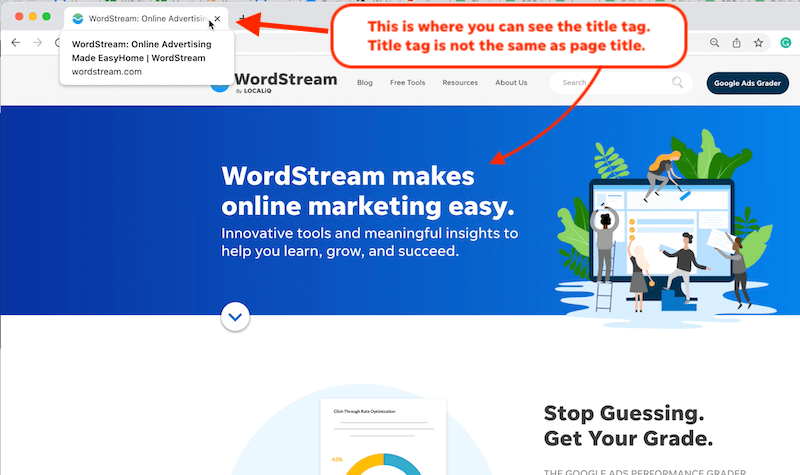Demystifying What Is Ruled Out a Default Medium in Google Analytics
Introducing the Unconventional Mediums in Google Analytics Beyond Default Setups
In the world of digital analytics, Google Analytics stands as a keystone for businesses seeking to comprehend their on-line presence. While default setups supply valuable understandings, real deepness of recognizing hinge on exploring the unusual tools that often go unnoticed. By venturing past the surface area and delving right into the intricacies of social media data, e-mail campaign performance, recommendation web traffic resources, straight website traffic patterns, and custom channel collections, a treasure of details awaits those ready to welcome a more nuanced approach. Nonetheless, what exists beneath these non-traditional mediums might simply redefine exactly how companies perceive and strategize their online initiatives.

Leveraging Social Media Insights
Periodically neglected, yet immensely valuable, is the method of leveraging social media sites insights within the realm of Google Analytics. By incorporating information from platforms like Facebook, Twitter, Instagram, and LinkedIn right into Google Analytics, companies can gain a much deeper understanding of their target market and the efficiency of their social media sites campaigns.
With this assimilation, marketers can assess and track individual behavior on their web site that originates from social media platforms. They can recognize which social networks networks are driving one of the most traffic, which material is reverberating with the target market, and which projects are converting the most leads. This understanding enables data-driven decisions to enhance social media sites strategies and enhance total marketing efficiency.
In addition, by incorporating social media sites understandings with Google Analytics, services can produce more targeted and individualized projects - what is not considered a default medium in google analytics. They can make use of demographic information, rate of interests, and online actions gathered from social media sites to improve their target market division and supply tailored messages that reverberate with particular consumer groups. This targeted approach can cause greater involvement, enhanced conversions, and inevitably, enhanced roi
Discovering Email Campaign Efficiency
Revealing Email Campaign Efficiency includes evaluating essential metrics and performance indications to assess the efficiency of e-mail advertising and marketing efforts. When delving into email project performance, it is critical to examine metrics such as open rates, click-through rates, conversion prices, and unsubscribe prices. Open up rates suggest the portion of receivers that opened up the e-mail, giving insight right into the efficiency of subject lines and sender names. Click-through prices measure the percentage of recipients who clicked on web links within the e-mail, showing interaction levels. Conversion prices track the percent of receivers who finished a preferred action after clicking a link in the email, such as buying or signing up for a newsletter. Unsubscribe prices highlight the number of receivers who opted out of receiving more emails, dropping light on email content high quality and relevance. By assessing these metrics, marketers can adjust their email campaigns for much better engagement and performance.
Analyzing Recommendation Website Traffic Resources
After examining the efficiency of e-mail campaigns through crucial metrics such as open rates and conversion prices, the following important step is analyzing recommendation website traffic resources in Google Analytics to recognize where web site visitors are originating from and exactly how they communicate with the website. Reference look these up traffic resources describe the web sites that direct customers to your site via clickable web links. By delving into this data, companies can gain insights into which exterior systems are driving traffic to their website, whether it be social networks platforms, partner sites, or on-line directories.
Examining reference traffic can supply valuable information on the efficiency of exterior advertising and marketing initiatives and collaborations. It aids businesses recognize high-performing reference sources that add substantially to internet site traffic and conversions. By recognizing the habits of site visitors coming from different referral sources, companies can tailor their advertising and marketing approaches to optimize involvement and conversions. Google Analytics offers thorough reports on reference web traffic, permitting businesses to track the performance of each reference source accurately and make data-driven decisions to boost their online existence.
Exploring Direct Website Traffic Patterns
Discovering the direct traffic patterns in Google Analytics gives valuable understandings into individual behavior and the efficiency of projects - what is not considered a default medium in google analytics. Straight web traffic refers to site visitors that arrive on a web site by straight inputting the link into their internet browser, using bookmarks, or clicking untagged web links. Comprehending direct traffic patterns can assist marketing experts assess the influence of offline advertising efforts, brand acknowledgment, and the efficiency of word-of-mouth references
By diving into straight web traffic information, services click here for info can reveal vital details about user intent and brand name commitment. Assessing the behavior of straight visitors, such as the pages they see, the moment invested on website, and the conversion rate, can provide a much deeper understanding of customer interaction and the overall effectiveness of the website in converting visitors into clients.
Additionally, tracking direct traffic patterns with time allows services to determine trends, seasonality results, and the success of certain campaigns or promos in driving straight brows through. This info can after that be utilized to improve advertising and marketing methods, optimize website web content, and boost the general individual experience to optimize conversions.
Making Use Of Customized Network Groupings
Making use of customized network groupings in Google Analytics permits companies to classify and analyze their internet site traffic based upon particular requirements, providing valuable insights for optimizing advertising strategies. Personalized network collections make it possible for firms to create their own personalized collections of web traffic resources, such as social media, organic search, email projects, and reference traffic. By specifying these groups, businesses can obtain a much deeper understanding of exactly how various marketing channels contribute to their site traffic Source and conversions.
This attribute is specifically beneficial for services with diverse advertising techniques across various platforms. As an example, a company running both paid and organic social media sites projects can separate between the two to assess their individual efficiency properly. Additionally, custom channel collections can aid identify any kind of neglected or taken too lightly traffic sources that might be driving important engagement.
Verdict

By venturing past the surface and diving into the details of social media information, email campaign performance, reference website traffic sources, direct traffic patterns, and customized channel groups, a treasure chest of info waits for those willing to embrace a more nuanced approach. They can identify which social media networks are driving the most traffic, which content is resonating with the target market, and which campaigns are converting the most leads.After reviewing the efficiency of email campaigns through essential metrics such as open rates and conversion rates, the next essential action is evaluating recommendation traffic sources in Google Analytics to recognize where website visitors are coming from and exactly how they engage with the site. Custom-made channel groups make it possible for business to produce their very own customized groups of traffic sources, such as social media, organic search, email projects, and recommendation web traffic. By leveraging social media understandings, discovering e-mail project performance, evaluating referral web traffic resources, exploring straight website traffic patterns, and using personalized network collections, marketing professionals can acquire important insights right into their on the internet visibility.